The Da Nang Museum of Cham Sculpture was recognised as a municipal-level historical relic site by Da Nang government on 11 January thanks to its great historical and cultural values, and its unique architectural styles.
Such recognition has facilitated functional local bodies to better manage and preserve the relic site under Vietnamese Law on Cultural Heritage, thereby contributing to promoting the cultural values of Da Nang and driving the development of the tourism industry.
Let's take a look at some photos below, captured by our reporter Xuan Son, to gain deeper insight into the freshly-recognised municipal-level historical relic site.
 |
| Nestled in Hai Chau District's Binh Hien Ward, the Da Nang Museum of Cham Sculpture has secured its position as one of best places in Da Nang to preserve and promote unique cultural heritage in the city, and in Viet Nam at large. |
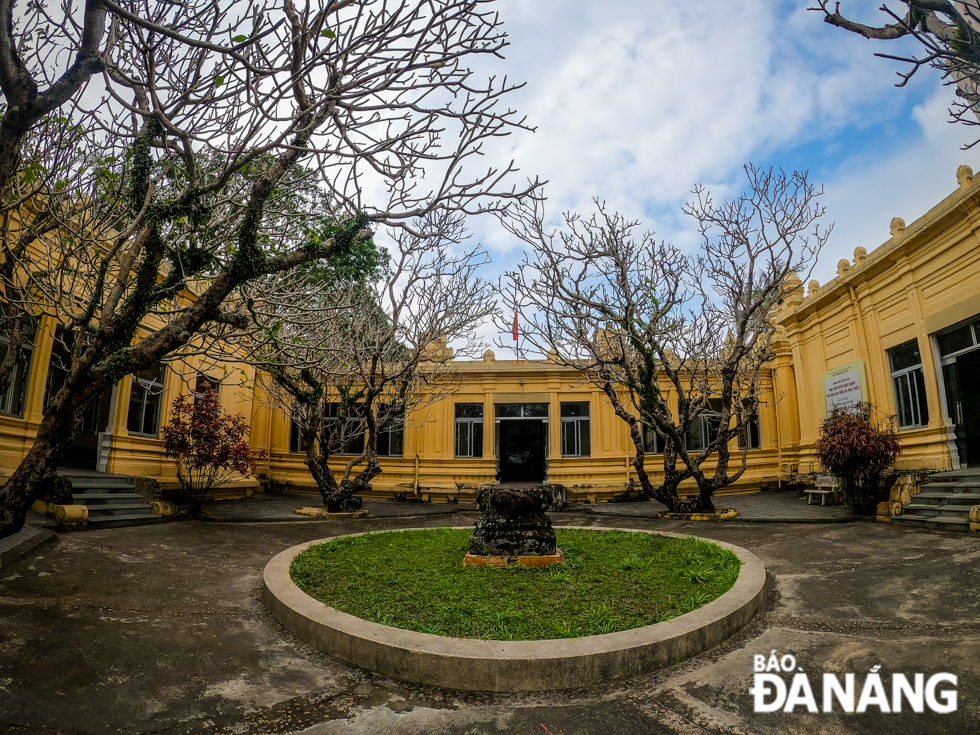 |
| The building of a museum of Cham sculpture in Da Nang was first proposed in 1902 by Henri Parmentier, a prominent expert of the Ha Noi-based L’École Française d’Extrême-Orient (EFEO). The first structure in what is now the Da Nang Museum of Cham Sculpture was built in 1915. |
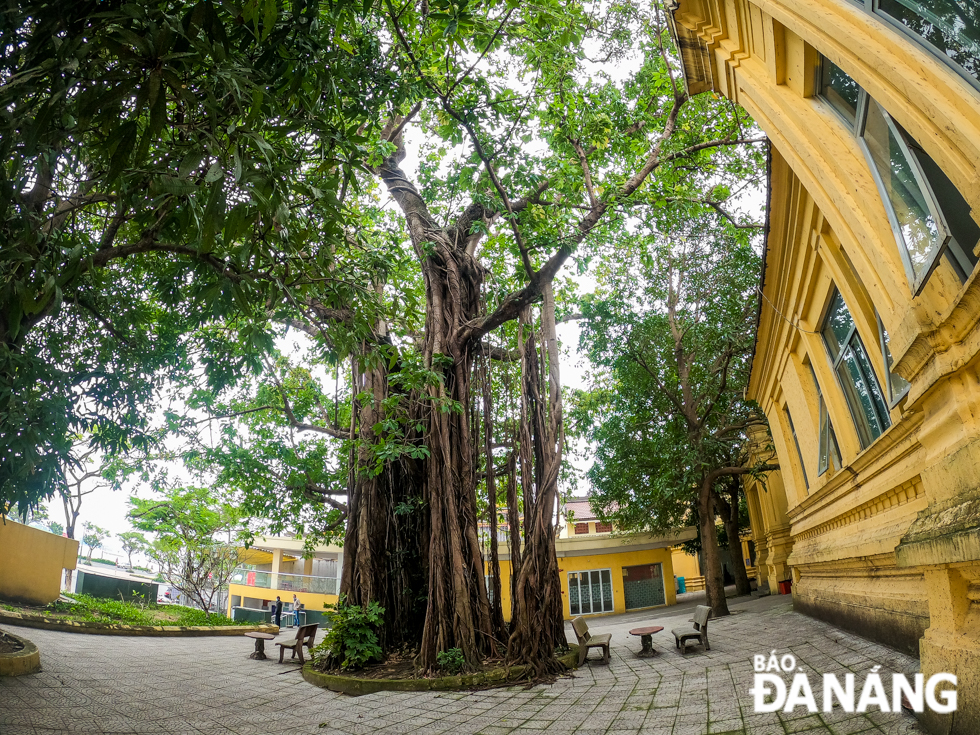 |
| The first building was designed by two French architects, M. Deleval and M. Auclair, who were inspired by Henri Parmentier to use traditional Cham elements in the design. |
 |
| Over recent years, the museum has been extended several times, but the unique combination of Cham and French colonial architecture has been still preserved. In 2011, the museum made it into a list of first-class museums in Viet Nam, hereby affirming its role in preserving and promoting cultural heritage values of Da Nang, and Viet Nam as a whole. |
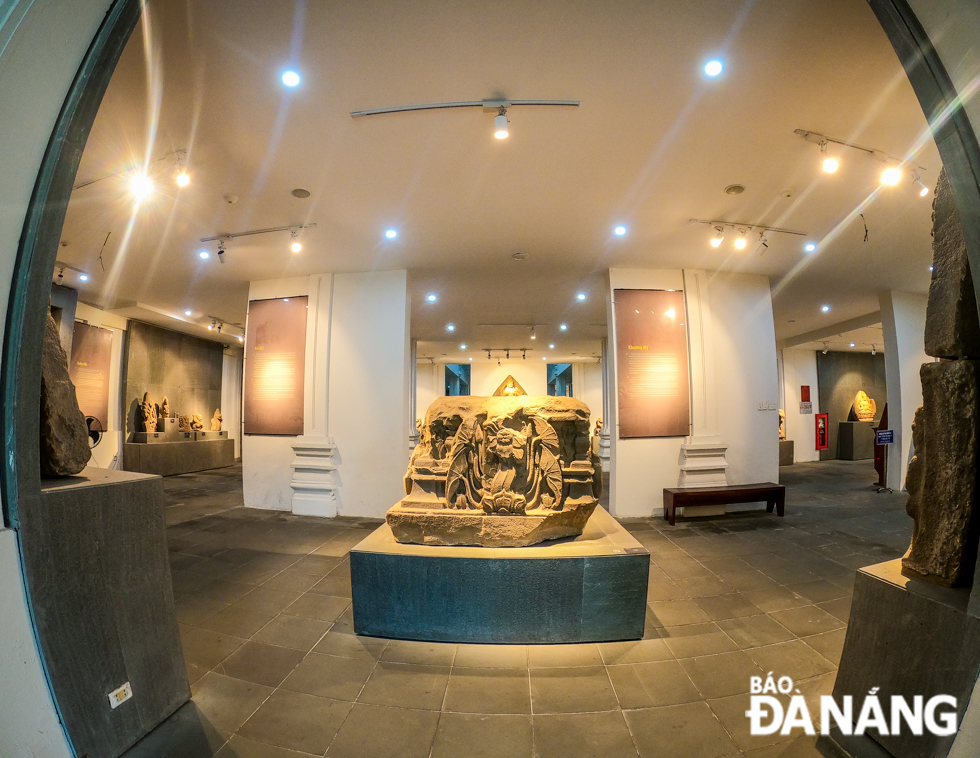 |
| Since 2005, Da Nang has mapped out a plan to upgrade the Da Nang Museum of Cham Sculpture. Within the framework of the FSP project, the galleries of My Son and Dong Duong were selected for renovation, and they reopened to the public in 2009. The Da Nang government-funded refurbishment of the Da Nang Museum of Cham Sculpture started in 2016 and completed in the following year. The purpose of the refurbishment was to improve the displays of the existing artifacts and the organisation of scientific events, as well as to cater for the increase in numbers of visitors to the museum. |
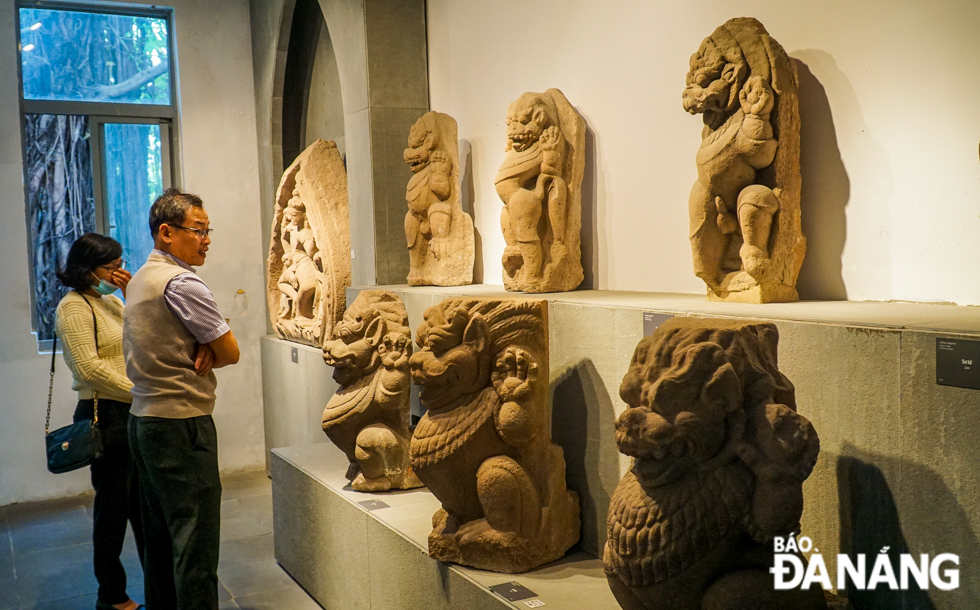 |
| The museum now features an image displaying room, an archaeology-themed room, 2 galleries on Cham ethnography in south central part of Viet Nam and Sa Huynh cultural achievements, and 10 Cham sculpture arts galleries including My Son, Tra Kieu, Dong Duong and Thap Mam. |
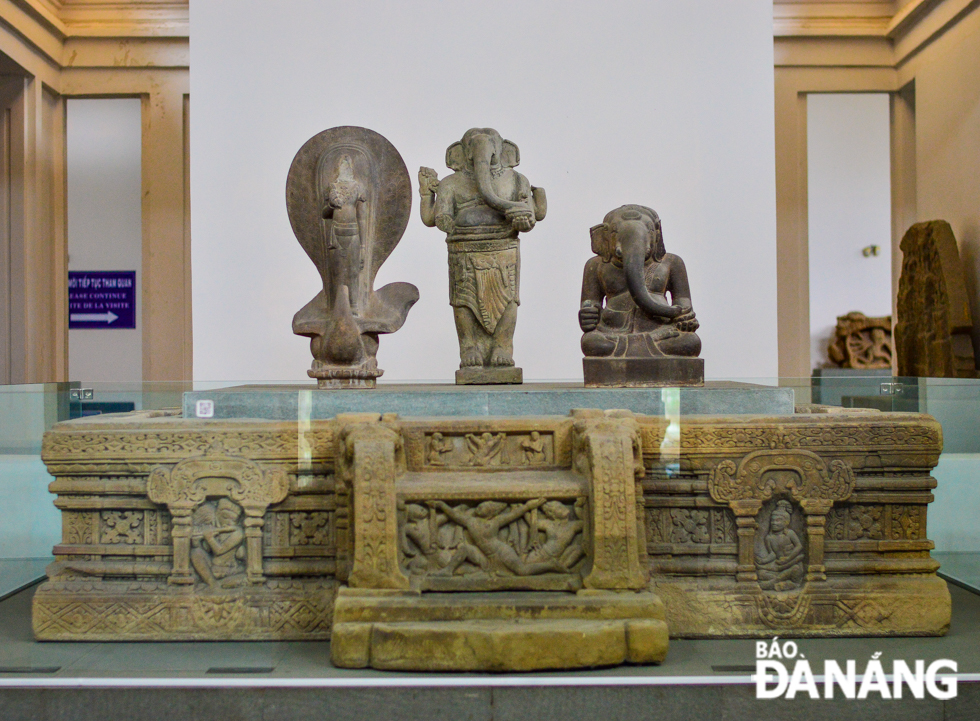 |
| The Da Nang Museum of Cham Sculpture now has six objects to be bestowed Viet Nam's national treasure status, namely the Ganesha and Gajasimha statutes, the Tara Bodhisattva Statue, and the Tra Kieu, My Son E1 and Dong Duong pedestals. In the picture: the My Son E1 pedestal and Ganesha statue (middle) are among the 6 national treasures which are now on display at the museum. |
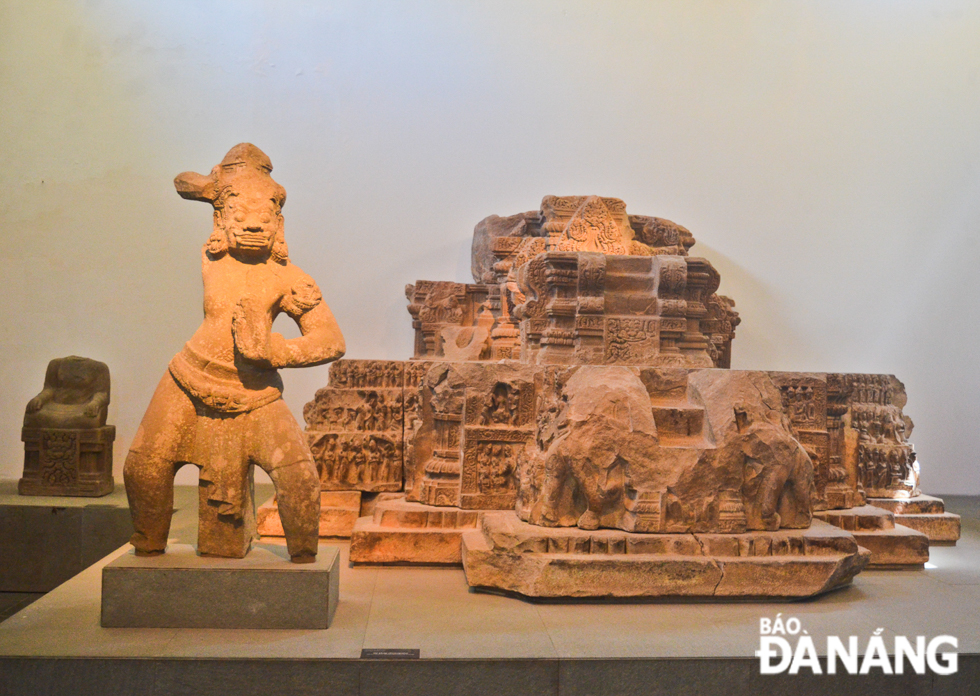 |
| Recognised as Viet Nam's national treasure in 2018, the sandstone Dong Duong Pedestal dates back to the late 9th and early 10th centuries. |
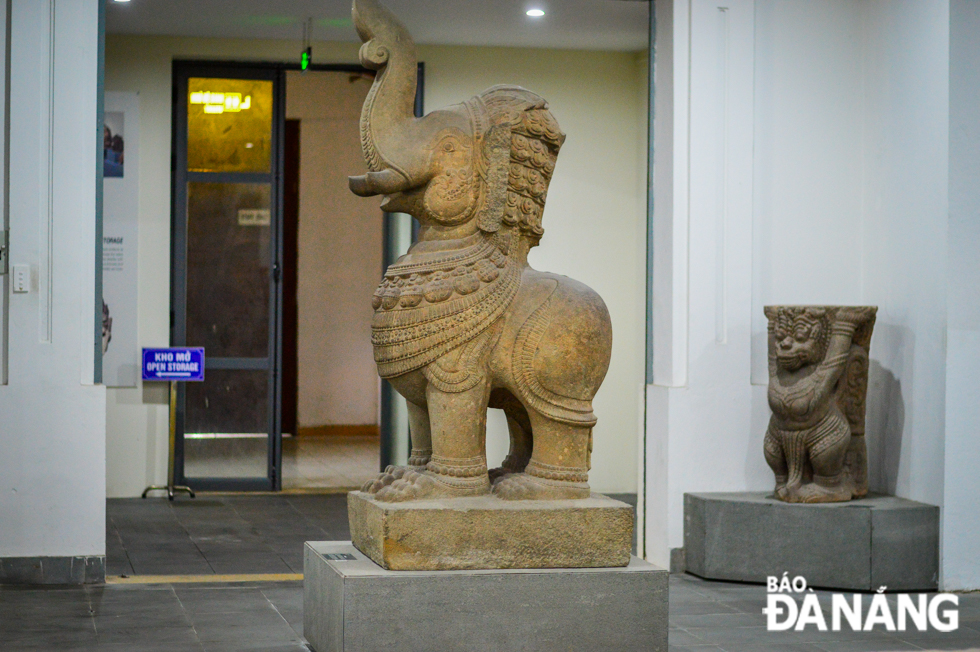 |
| The Ganesha and Gajasimha statutes were bestowed Viet Nam's national treasure status on 31 December 2020. |
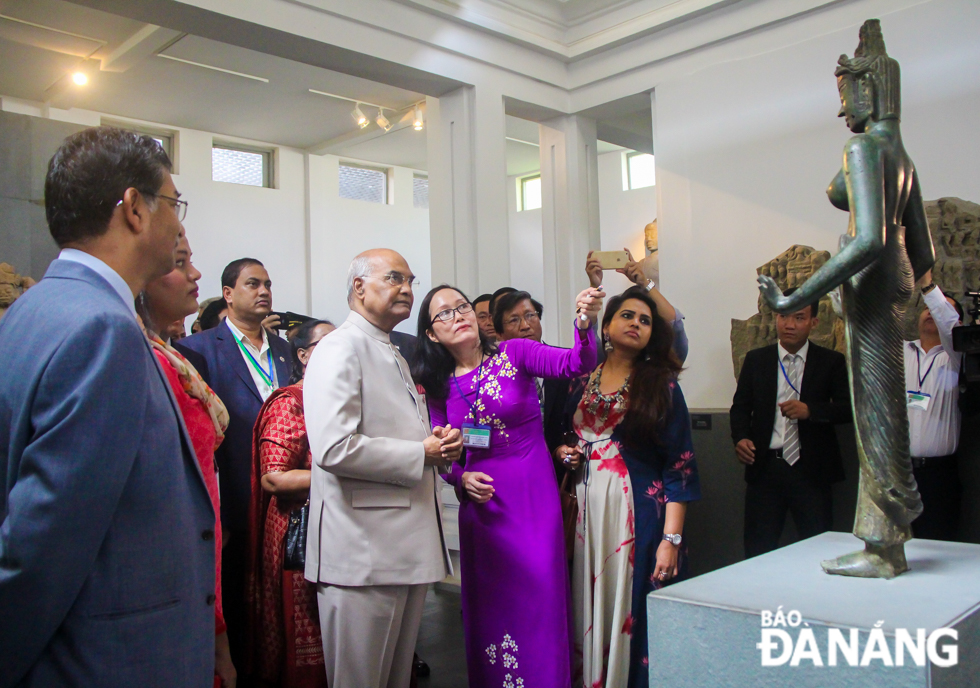 |
| Indian President Ram Nath Kovind (in light gray suit) showing his keen interest in a gilt-bronze statue of Bodhisattva Tara during his visit to the museum in November 2018. |
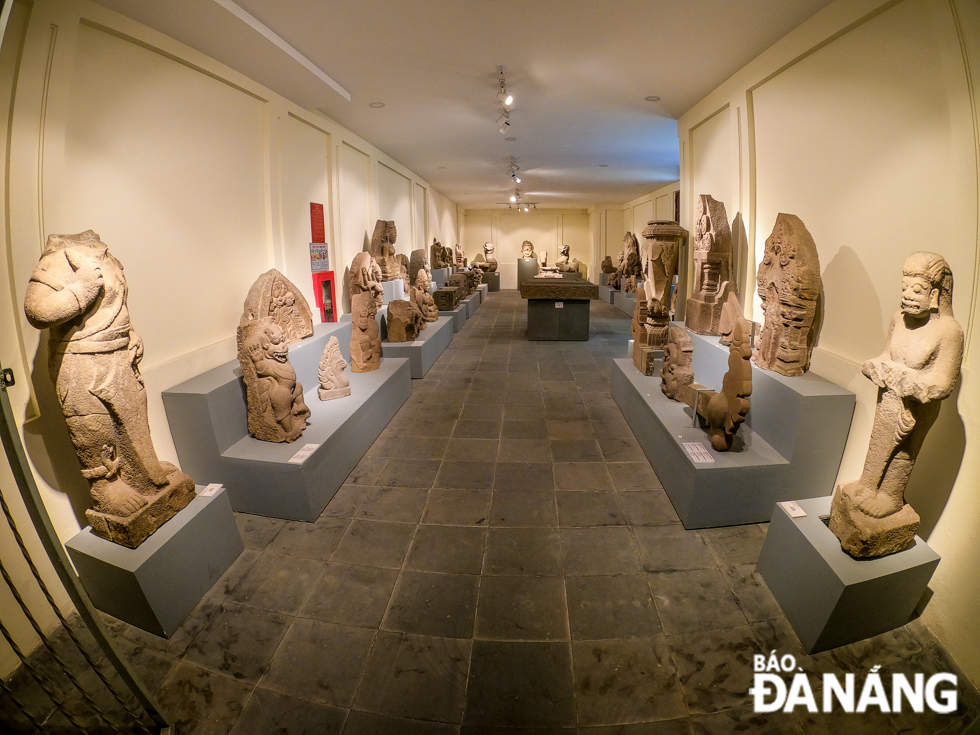 |
| In addition to the special gallery, the Museum opened a new display of 47 sandstone artifacts at its open storage in 2019. |
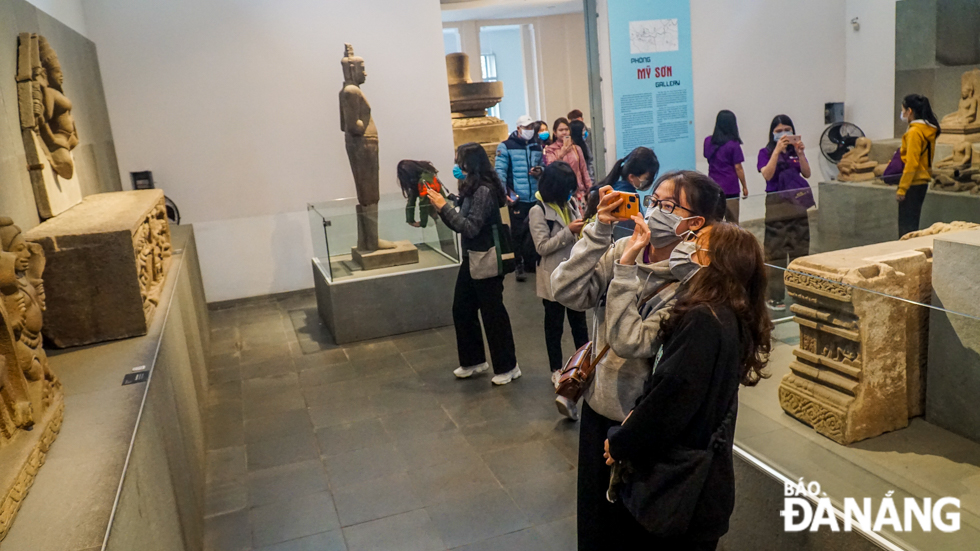 |
| Admission fees are waived for visits to the museum during the year of 2021 as an effective move to stimulate travel demand for the rebound and revitalisation of domestic tourism in the new normal, as well as to spread special values of the Champa culture to the community. |
By XUAN SON - Translated by M.D
.














